These traditional Romanian stuffed peppers (a.k.a. ardei umpluți) are just like grandma used to make. Hollowed out peppers stuffed with a spiced meat and rice mixture and cooked in tomato juice until fall-apart tender.

Stuffed peppers are part of the larger culinary continuum of stuffed vegetables that spans from the Balkans to the Middle East and beyond. They're a very traditional dish in Romania that's eaten frequently for regular family meals.
The nice thing about stuffed peppers is that they make a complete meal between the rice, meat and pepper shell. Plus, the combination of ground meat and rice slow cooked in tomato juice is so hearty, creamy and satisfying.
Unlike their closely related cousin cabbage rolls (sarmale) which are basically Romania's national dish and served for every event from weddings to Christmas meals, stuffed peppers aren't reserved for special occasions.
I assume part of the reason is that they're really easy to make even during the course of a busy week. It takes a bit of time to get them in the oven, but it's not technically challenging in any way. Plus you can easily make a big batch during weekend meal prep and enjoy them throughout the week.
You can even just make a big batch of filling and make a few different meals with it. In Romanian cuisine the filling in stuffed peppers is similar to the filling used for the rice meatballs that go into Romanian meatball soup and also similar to the mixture for making porcupine meatballs in tomato sauce.
So once you have the basic filling recipe down, you can use it in a variety of ways.
If these are new to you I'm really curious how you find them. And if you grew up in a Romanian household eating stuffed peppers then I hope this recipe hits the nostalgia note for you.
And if it doesn't let me know if you made them differently in your household or region.
Jump to:
Ingredients
The ingredients here are for a batch of traditional Romanian stuffed peppers.

- Ground beef and pork: traditionally peppers are filled with either ground pork or a mix or beef and pork.
- Sweet peppers: About 10-12 peppers. You need enough peppers to fit snugly in your cooking vessel. For me this was 11 small peppers. In Romania you often see a variety of small bell pepper that's a very pale greenish yellow. I've never been able to find the name of that variety (if you know please let me know in the comments). In general any pepper will do but a smaller pepper (ideally with a flat bottom) is best for flavor and handling. If you only have access to regular sweet peppers then I would suggest green or yellow since the flavor is most similar to the traditional variety.
- Finely diced yellow onion: gives flavor to the filling.
- White rice: short grain like arborio or carnaroli is best.
- Whole tomatoes: sliced for lids and crushed for cooking liquid.
- Egg: makes the filling stick together and gives it more bite. You can also omit it for a looser filling.
- Oil: for frying the onions and filling.
- Tomato paste: for flavoring the filling.
- Seasoning: fresh parsley, smoked paprika, dried dill, bay leaf, salt and black pepper.
See substitutions section for alternatives and recipe card for quantities.
Instructions for preparing the peppers
There are only a few steps to make the stuffed peppers but there are some tips along the way that can bring out more flavor in your final dish.
The most important part of preparing the peppers themselves (and their lids) is that they fit snugly in your pot. If they don't they can tip over. And more importantly you'd be wasting valuable real estate.
My rule of thumb is to try to fit in as many peppers as will fit, without breaking them. Likewise, you need as many tomato lids as you have peppers. You can usually get about 4 (or if you're creative 5) lids from a tomato.
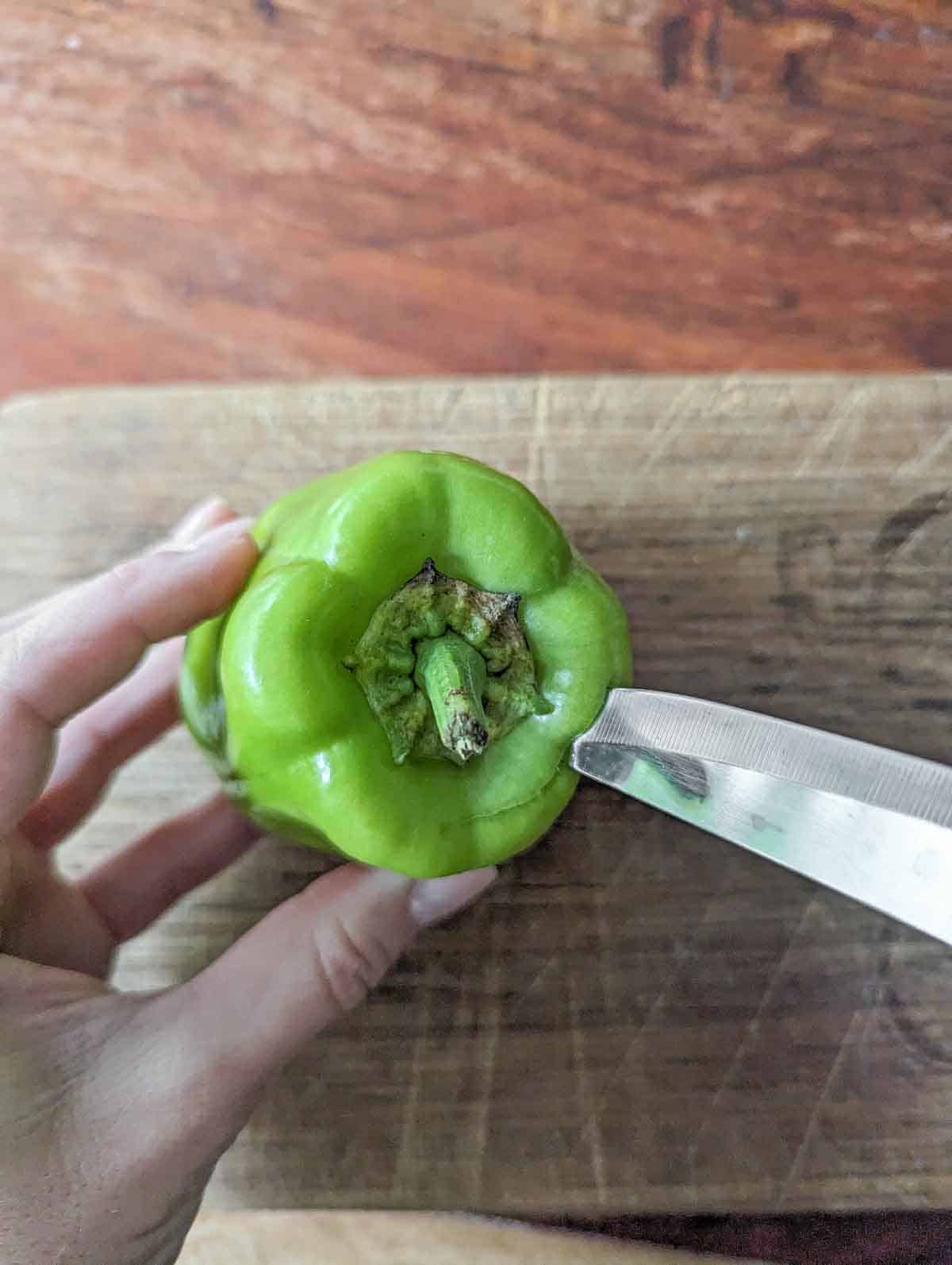
First, core the peppers by using a sharp knife to cut approximately a centimeter around the stem. Discard the stems. Make sure you also remove the seeds and white fibers from inside the pepper.
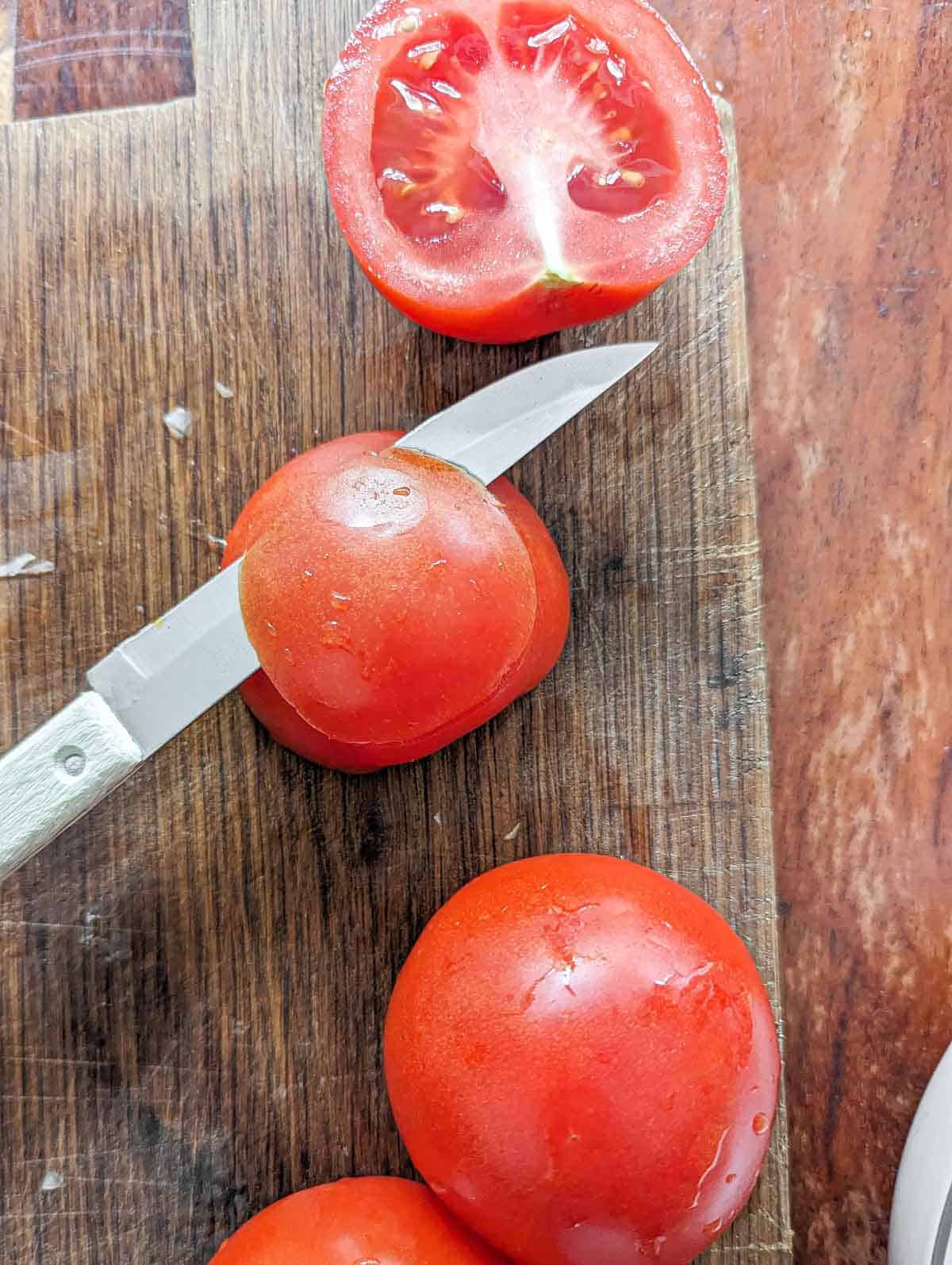
Then use a sharp knife to slice the skin off the tomatoes to make lids for the peppers. Put the rest of the tomatoes along with some water in a food processor or blender and blend until there are no big chunks anymore.

Put the hollowed out peppers in your pot. They should fit snugly.
If you aren't using whole tomatoes:
If you aren't using whole tomatoes then don't discard the stem. Keep that portion and use it as a lid. But be sure to remove the seeds and white fibers from inside.
Instructions for preparing the filling
Since you aren't seasoning the hollowed out peppers, the filling is the source of all of the flavor in the dish. As such, it get s a bit of extra attention so it can rise to the occasion.
You can certainly just take all the ingredients for the filling, mix them together and put them in the peppers - then just make sure you add an additional 1.5 cups of water to the pot.
That method can work if you cook low and slow in the oven with a lid on. There's enough liquid and enough time to cook the raw rice.
But that method is skipping a whole world of flavor that can be added by precooking the filling.
Benefits to precooking the filling
You don't have to cook it all the way, but a little bit of cooking before the peppers go in the oven can bring a lot of benefits.
The benefits of precooking or par-cooking the filling are:
- Rice gets a head start: By precooking the rice, you can stuff the peppers quite tightly without risking that they will pop from the rice expanding during cooking.
- Add extra flavor through caramelization: Precooking the filling allows you to cook some of the ingredients with dry heat, which means you can caramelize them and add a lot of extra flavor. The ingredients that benefit from this most are the onions and the tomato paste.
How to add caramelization to the filling
Here are some tips to caramelize the filling:
- The onions should be cooked first in oil and they should be allowed to cook until they reduce in volume (i.e. evaporate some water) and begin to brown. That browning is caramelization.
- Once the onions have browned, add the rice (so it gets a head start) and the tomato paste. Sauté for a few more minutes to give the tomato paste a chance to caramelize. Tomato has a ton of flavor compounds, some of which only develop at different stages of cooking. Cook the tomato paste, onion and rice until it starts sizzling and sticking to the pan.
- You'll need to start adding a cup of water at this point. Wait until the tomato paste, onion and rice are really sizzling and sticking to the pan before you add the water (a quarter cup at a time). When you do add the water, it should cause an immediate sizzle and evaporation in the pan. Then continue cooking, not adding more water until the pan is dry and sizzling. If your ingredients are sticking, add more oil.

First sauté the onion in oil until it has reduced and begun to brown. Then add the tomato paste and rice. Follow the directions above for caramelizing the filling.
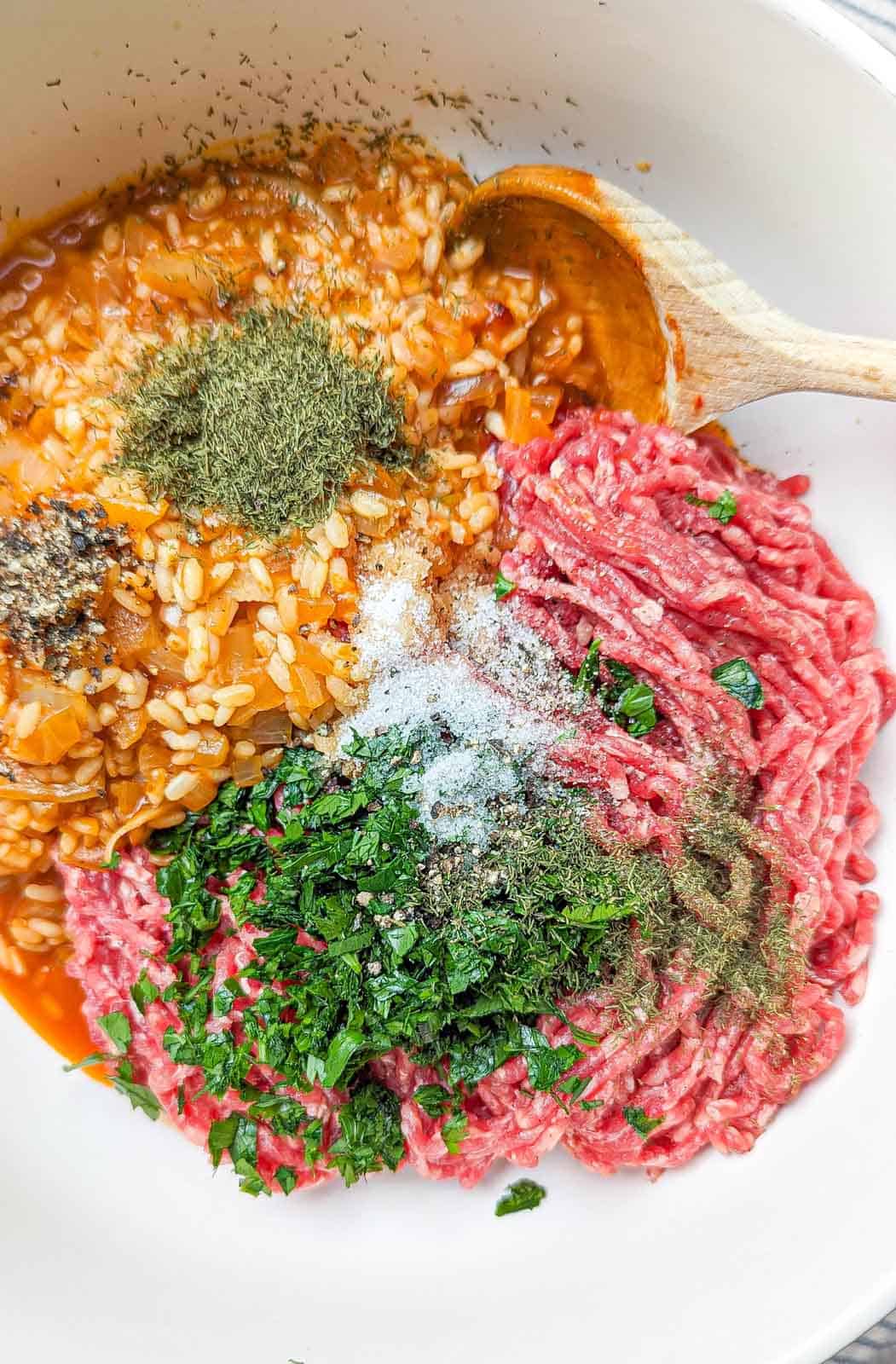
Mix the rice, onion and tomato paste with the rest of the filling ingredients (except the bay leaf)
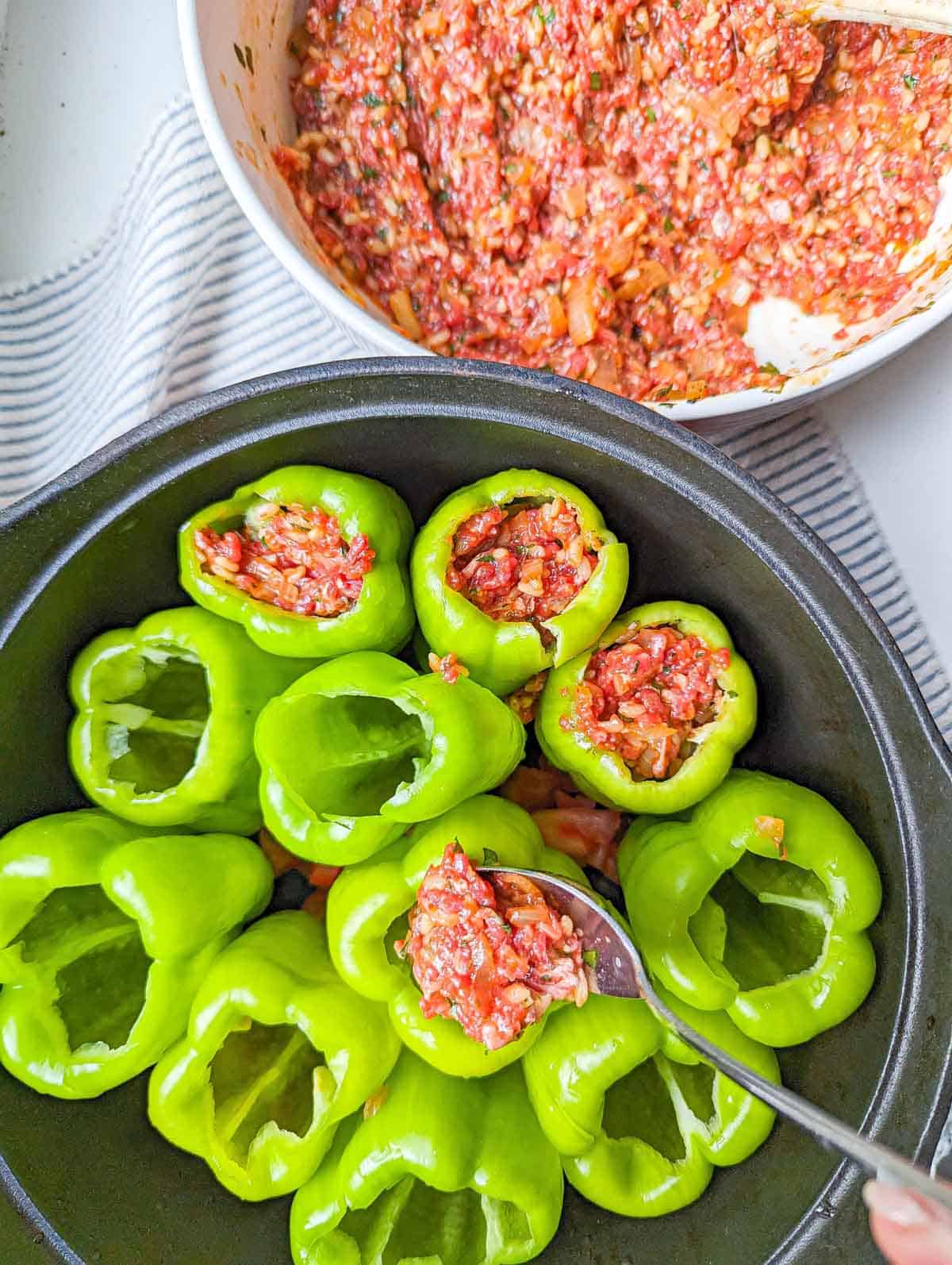
Use a spoon to fill the peppers. Gently press the contents down and add as much filling as you can without putting a lot of pressure on the peppers. Keep in mind they will expand as the rice cooks and inflates.

Put the tomato lids on the peppers, pour over the tomato juice, add the bay leaves, then cover and cook.
Substitutions
There are a ton of ways you can make substitutions to this recipe, and all those ways probably constitute recipes in their own right.
- Ground meat - you can substitute the ground beef and pork for other types of ground beef or for a plant-based option like Beyond Beef. In Romania many people fast for lent and follow a totally plant-based diet for large portions of the year, so there are a lot of recipes for whole food plant-based stuffed peppers. For example you can swap out the meat for mushrooms.
- Rice - you can swap out the short-grain white rice for long grain rice like basmati, for brown rice, a brown and wild rice mix, or even some other grain like barley or spelt.
- Vegetables - there are so many vegetables that can be stuffed. Tomatoes, zucchini, cabbage, eggplants, grape leaves, tomatoes etc. etc.! Let your imagination run wild!
- Seasoning - the seasoning indicated here is for very traditional tasting Romanian stuffed peppers. You can use different seasoning combinations or mixed for a different taste.
Variations
Giving the visitor ideas on how they can change this recipe to better suit their dinner guests, or their cultural cuisine, is a great way to increase the chances they make the recipe
- Meatballs - the ground meat and rice mixture in this recipe is almost the same as that used in porcupine meatballs - either in tomato sauce or in a soup like traditional Romanian meatball soup or even cabbage roll soup with rice meatballs.
- Cabbage rolls (sarmale) - the filling has a lot of similarities (ground meat, rice and onion) but also a lot of differences - a lot more fat and smoked meat goes into cabbage rolls which, along with the sauerkraut used for the wrapping, gives them a very distinctive taste.
Equipment
You will need a skillet for preparing the filling and a larger and deeper pot with a lid for cooking the stuffed peppers. I used a cast iron standard sized (5.5 liter / 6 quart) Dutch oven I bought at a thrift shop.
The only important consideration is that you can fit the peppers in snugly and put a lid on.
Storage
- The cooked stuffed peppers keep in the fridge for about 4 days.
- If you want to store long-term, freeze the filling for up to 8 weeks. You can also use it to make other recipes like rice meatballs for soup or in sauce.
Top tip
It's all about the filling. The way you season the filling will make a big impact on the final dish. The seasoning can take it from 'traditional Romanian' to Turkish to Egyptian to Serbian and beyond. The one thing you don't want to do is under-season the filling.
Related
Looking for other recipes like this? Try these:
Pairing
Romanian stuffed peppers are traditionally served with either sour cream or yogurt and some nice crusty bread.

If you fancy making your own bread, here are some bread recipes:
Recipe

Romanian Stuffed Peppers (Ardei Umpluți)
Ingredients
- 11 yellow peppers see recipe post for details
- 250 grams ground beef
- 250 grams ground pork
- ⅔ cup short-grain white rice
- 3 tablespoons vegetable oil
- 2 small yellow onions
- 4 large tomatoes
- 5 tablespoons tomato paste
- 3 tablespoons fresh parsley finely diced
- 2 teaspoons smoked paprika
- 2 teaspoons dried dill
- 3 dried bay leaves
- 1.5 teaspoons black pepper
- 2.25 teaspoons salt
Instructions
- Preheat oven to 175C / 350 F.
prepare the peppers and lids
- Core the peppers by using a sharp pointed knife to cut about a centimeter around the stem, removing the stem, as well as all the seeds and white fibers from the inside of the peppers.
- To make lids for the peppers, slice the skin off the tomatoes, cutting out round disks that are around the same size as the openings in the peppers.
- Set the tomato lids aside, and blend the rest of the tomatoes in a food processor or blender with a cup (250 ml) of water until they are fully blended and set it aside.
prepare the filling
- Heat 2 tablespoons of vegetable oil over medium-high heat in a non-stick skillet.
- Sauté the onion until slightly reduced and beginning to brown (3 minutes)
- Add the tomato paste, rice. and remaining tablespoon of oil. Sauté another 2-3 minutes until the mixture is very dry and starting to sizzle.
- Add a cup of water (250 ml), a quarter cup at a time allowing the mixture to reduce, dry out and sizzle in between. This will caramelize it and bring out more flavor.
- After all the water is added, turn off heat and add another half cup of water. Mix and set it aside to cool for a few minutes.
assemble and cook
- Combine the ground meat with the cooked rice onion mix and all the seasonings (except the bay leaves). Mix until homogenous.
- Put the peppers into your pot. They should be snug enough that they hold one another up. See recipe post for details.
- Use a spoon to fill the peppers with the filling. You can press the filling down a bit to fit more, but don't overfill or the peppers can break open when the rice expands. See recipe post for details.
- Gently press the tomato lids into the opening of the peppers, so they sit in the pepper under the lip of the opening.
- Once all the peppers are filled and covered with lids, pour the blended tomato over them and place the bay leaves between the peppers, pressing them down so they're touching the liquid.
- Cover and bake in a preheated oven for one hour.*
Notes
- * It's also very common to cook stuffed peppers on the stovetop. Personally I like the flavor that develops from the drier heat of the oven (and the fact that it feels more hands-off to just put the pot in, set-it-and-forget-it style) but if you don't have an oven or prefer the stovetop you can use that instead. Cook on the stovetop over medium-low heat for 50-60 minutes.

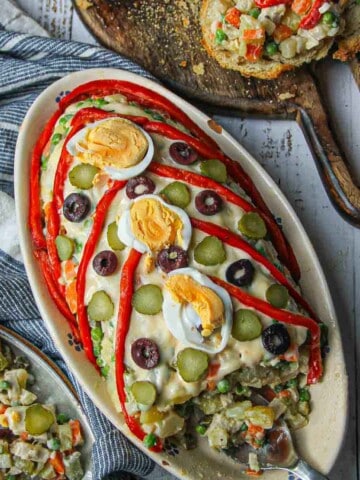
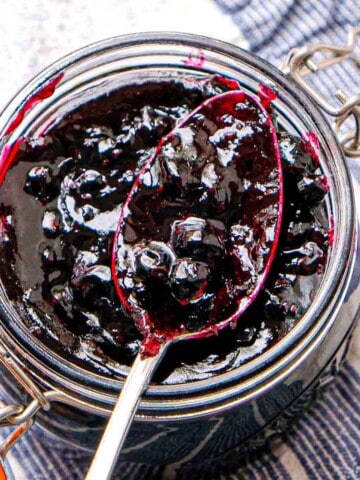

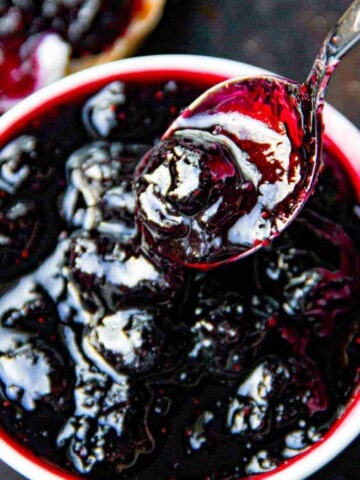
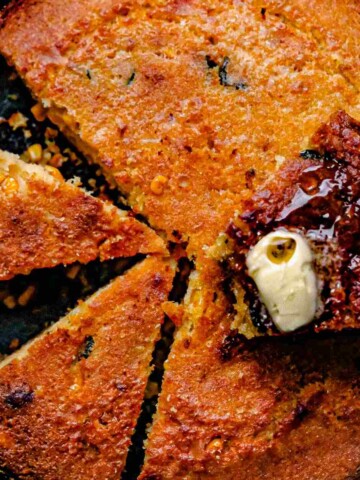
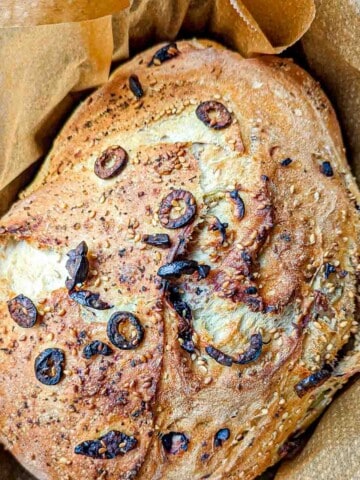
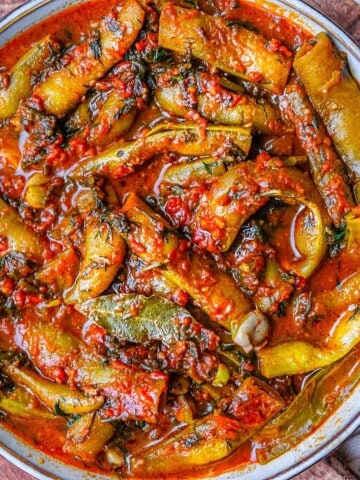
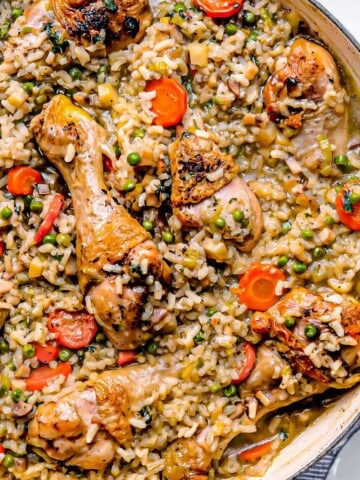
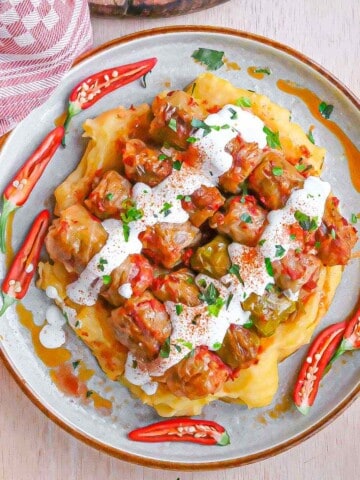

Thomas
I know it says 11 servings. I know it shows 11 stuffed peppers in the picture. Yet, you didn’t put how many peppers (and what kind) in the recipe list specifically.
Other than that, I’m excited to cook this weekend. I’m sure it will turn out great!
Cristina
Ah so sorry about that Thomas and thanks for pointing it out to me! I updated the post and recipe card to be clearer on the peppers 🙂 there's a bit of info on the type of peppers in the 'ingredients' section of the recipe post. Hope you enjoy them!
Lidia Kerber
I live in Michigan. Here I find those pale green, yellowish peppers under the name "Gypsy peppers".
This week the yellow (regular American) peppers were on sale ($1.00 each if you buy one) and we bought and because I haven't cooked them in a while, I was browsing through recipes online, to make sure I don't forget something,
I like your recipe, and I do it the same, except after filling them with meat/rice mixture, I fry them in the pot a little... it takes the bitterness out of green peppers and it enhance the sweetness in the yellow ones.
Cristina
Hi Lidia. Oh that's a really interesting idea thanks for sharing I think I'll give it a try 🙂